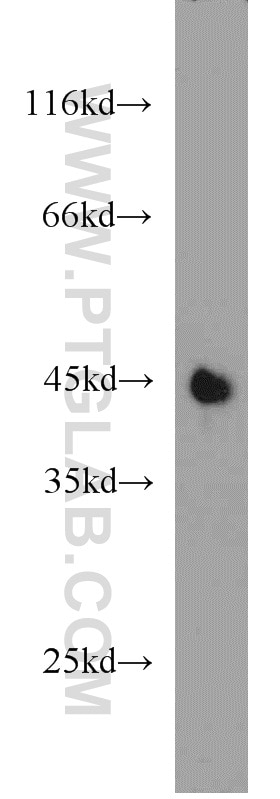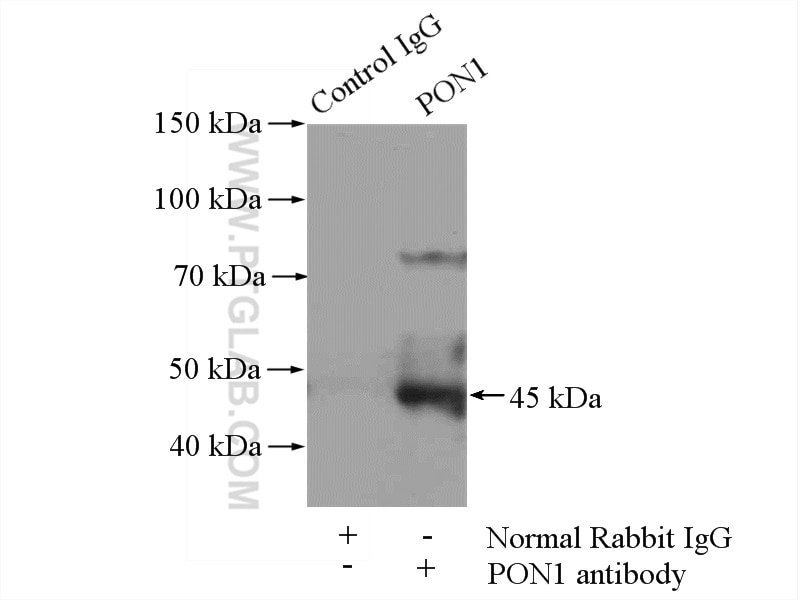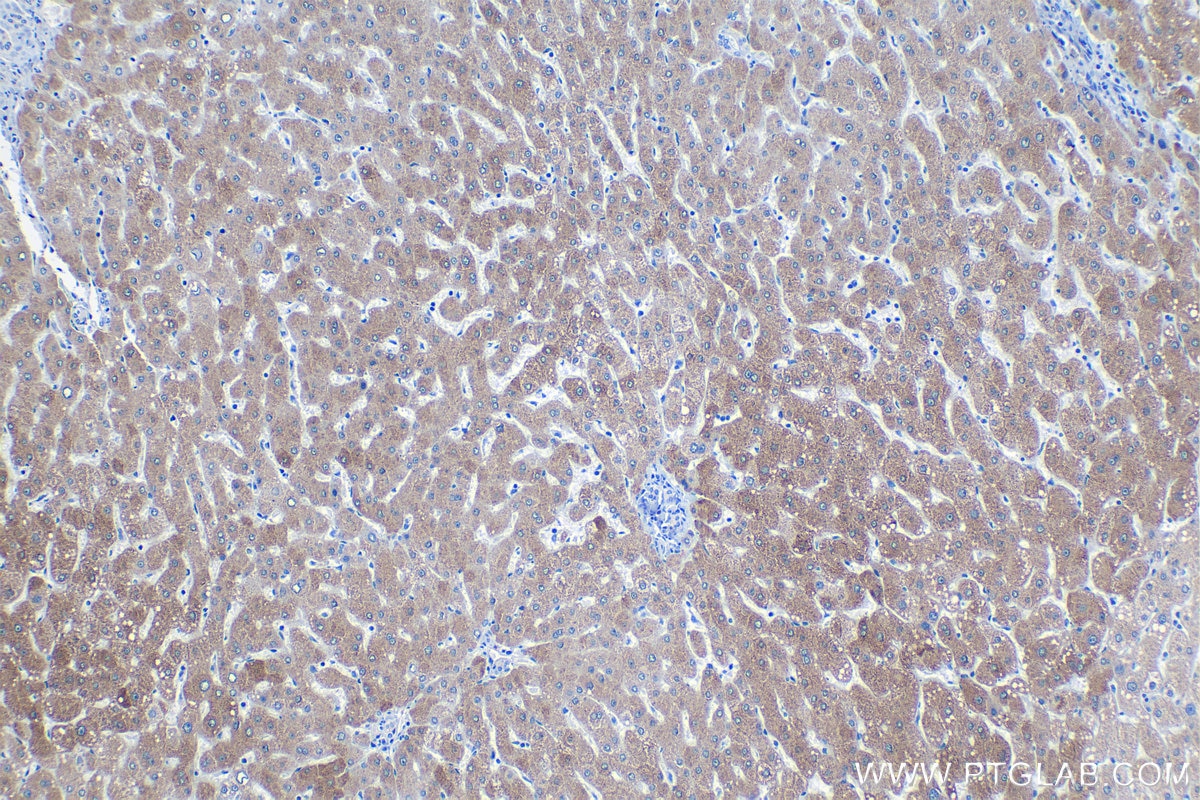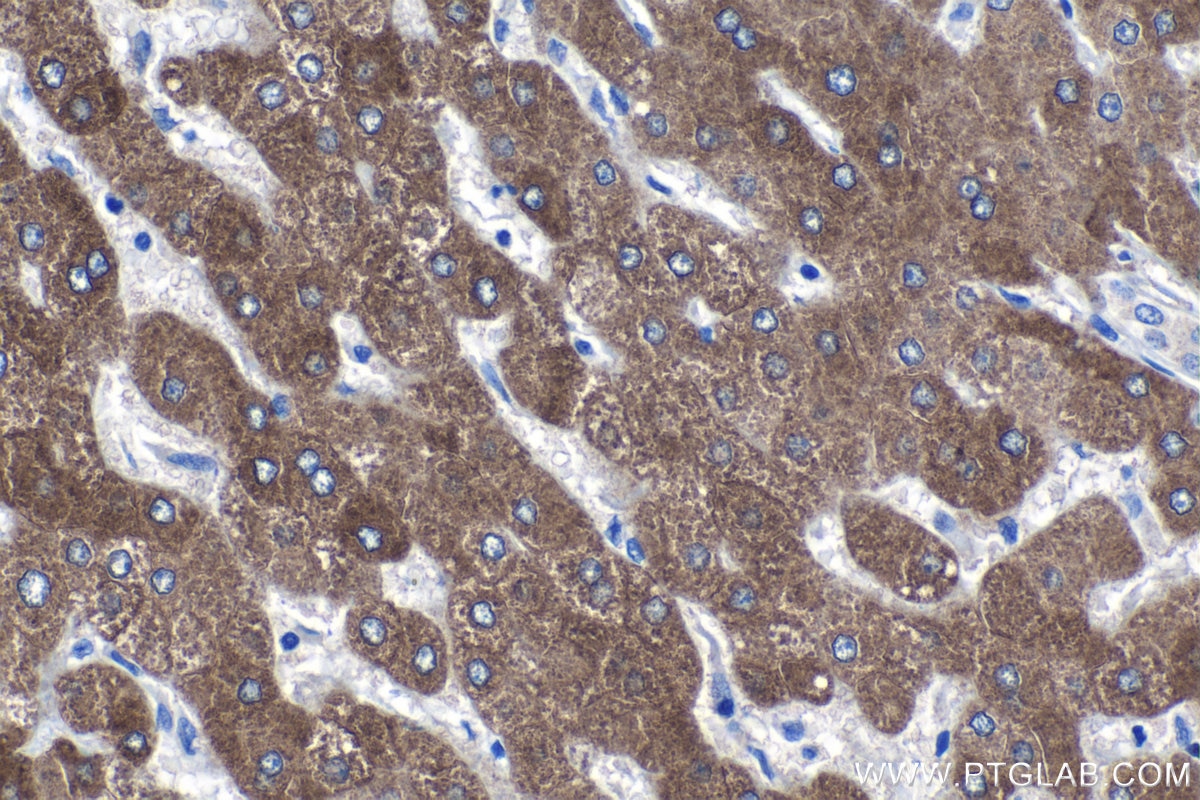Validation Data Gallery
Tested Applications
| Positive WB detected in | human plasma, mouse liver tissue |
| Positive IP detected in | mouse liver tissue |
| Positive IHC detected in | human liver tissue Note: suggested antigen retrieval with TE buffer pH 9.0; (*) Alternatively, antigen retrieval may be performed with citrate buffer pH 6.0 |
Recommended dilution
| Application | Dilution |
|---|---|
| Western Blot (WB) | WB : 1:500-1:1000 |
| Immunoprecipitation (IP) | IP : 0.5-4.0 ug for 1.0-3.0 mg of total protein lysate |
| Immunohistochemistry (IHC) | IHC : 1:500-1:2000 |
| It is recommended that this reagent should be titrated in each testing system to obtain optimal results. | |
| Sample-dependent, Check data in validation data gallery. | |
Published Applications
| WB | See 5 publications below |
| IHC | See 2 publications below |
| IF | See 3 publications below |
| IP | See 1 publications below |
| ELISA | See 1 publications below |
Product Information
18155-1-AP targets PON1 in WB, IHC, IF, IP, ELISA applications and shows reactivity with human, mouse samples.
| Tested Reactivity | human, mouse |
| Cited Reactivity | human, mouse |
| Host / Isotype | Rabbit / IgG |
| Class | Polyclonal |
| Type | Antibody |
| Immunogen | PON1 fusion protein Ag12934 相同性解析による交差性が予測される生物種 |
| Full Name | paraoxonase 1 |
| Calculated molecular weight | 355 aa, 40 kDa |
| Observed molecular weight | 35 kDa, 40-45 kDa |
| GenBank accession number | BC074719 |
| Gene Symbol | PON1 |
| Gene ID (NCBI) | 5444 |
| RRID | AB_2166315 |
| Conjugate | Unconjugated |
| Form | Liquid |
| Purification Method | Antigen affinity purification |
| UNIPROT ID | P27169 |
| Storage Buffer | PBS with 0.02% sodium azide and 50% glycerol , pH 7.3 |
| Storage Conditions | Store at -20°C. Stable for one year after shipment. Aliquoting is unnecessary for -20oC storage. |
Background Information
PON1, also named PON and K-45, belongs to the paraoxonase family. PON1 hydrolyzes the toxic metabolites of a variety of organophosphorus insecticides. It is capable of hydrolyzing a broad spectrum of organophosphate substrates and several aromatic carboxylic acid esters. PON1 may mediate enzymatic protection of low-density lipoproteins against oxidative modification and the consequent series of events leading to atheroma formation. PON1 was identified as a triple band in a range of approximately 35-40 kDa. For glycosylated, the MW of PON1 is migrated 42-45kd, while the 35 kDa band represents the unglycosylated form (PMID: 17906223, 32002976, 21852972). The antibody has cross-reaction to PON2 and PON3.
Protocols
| Product Specific Protocols | |
|---|---|
| WB protocol for PON1 antibody 18155-1-AP | Download protocol |
| IHC protocol for PON1 antibody 18155-1-AP | Download protocol |
| IP protocol for PON1 antibody 18155-1-AP | Download protocol |
| Standard Protocols | |
|---|---|
| Click here to view our Standard Protocols |
Publications
| Species | Application | Title |
|---|---|---|
Cell Death Dis GPx1 is involved in the induction of protective autophagy in pancreatic cancer cells in response to glucose deprivation. | ||
Cell Mol Neurobiol PGC-1α Inhibits Schwann Cell Dedifferentiation and Delays Peripheral Nerve Degeneration by Targeting PON1 | ||
Respir Res Loss of interferon regulatory factor-1 prevents lung fibrosis by upregulation of pon1 expression | ||
Biochem Biophys Res Commun Modulating lysophospholipids with Paraoxonase-1: Exploring its impact on inflammatory responses and immune reactions | ||
Biomed Pharmacother GYY4137, a H2S donor, ameliorates kidney injuries in diabetic mice by modifying renal ROS-associated enzymes |




